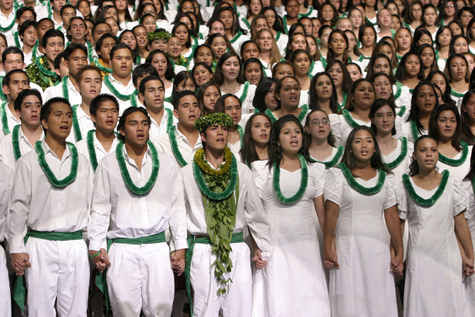Like immersion schools, Kamehameha Schools uses Hawaiian culture and language as the foundation to their academic system, but is not taught through the Hawaiian language and they have an Admissions Policy of a preference of students with Native Hawaiian ancestry only.
A big event for Kamehameha Schools is their Annual Song Contest , this year celebrating their 91st anniversary. The competition involves each class competing, each gender class competing, and other small awards.
“The objectives of the song contest are to build up the repertoire of the best in Hawaiian music for the cultural heritage of any student who attends Kamehameha; to develop leadership, cooperation and good class spirit; and to give students the use of their signing voices and to give them pleasure in signing as a means of expression.”
– Laura Brown (Director of Music at Kamehameha Schools from 1926-1947)
There are six different awards awarded at the song contest which you can find on Kamehameha Schools website. All songs performed are in the Hawaiian language. The song contest is also broadcasted statewide in Hawai’i and streamed live off the internet, so I was able to watch it while in California when it streamed on March 18, 2011.
My favorite award to always look out for is the Richard Lyman Jr. ‘Ōlelo Makuahine (Mother Tongue) Award because being fluent in Hawaiian I expect this performance to be the best. This year my favorite class was of course the senior class, both girls and boys who won the Charles Edward King Cup. I enjoyed when they sang “E Maliu Mai” by a well known musician in Hawai’i, Irmgard Aluli. This performance was very beautiful describing Aluli’s matrimonial masterpiece and one of my favorite Hawaiian love songs. Here is the video below:








